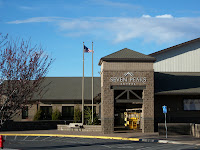 If you're like most principals you spend more time than you would like in meetings. Many are very productive and others are far less successful. There are several things you can do to immediately improve the meetings you lead.
If you're like most principals you spend more time than you would like in meetings. Many are very productive and others are far less successful. There are several things you can do to immediately improve the meetings you lead.First, it is critical to spend some time planning the meeting. Be clear about the purpose of the meeting. Be equally clear about what is being decided and who will make the decision. Also identify any meeting standards or norms. For example, a set of operational norms about how the group will work together can make a meeting more successful.
Second, develop an agenda that includes the following items: a clearly stated purpose or goal for the meeting, time to review agreed-upon operational norms and norms of collaboration, a clear statement for each agenda item about the action to be taken (e.g., discussion, decision), the allocation of time for each item, time for reflection and processing of information, and time at the end of the meeting to clarify what information should be shared and by whom.
Third, always be clear about operational norms. This includes seating arrangements, processes for group memory (recording discussion and decisions), guidelines for discussion (use of a parking lot), adequate time for discussion, clarity about when the group moves from discussion to decision-making, and methods for disseminating information. Bob Garmston and Bruce Wellman provide a useful set of norms at www.adaptiveschools.com.
Finally, be clear about how decisions will be made and by whom. If the group is deciding identify the process before it is time to make a decision. Consensus is often the preferred model but can be cumbersome. Many groups use some alternate like requiring agreement by 75% of the group, or using the "Fist to Five" model discussed in a blog entry on January 28, 2010.
Meetings can be a challenge. Because principals are involved in so many of them it is important that they be as successful as possible. I hope you find these ideas helpful and would enjoy hearing from you about your strategies for leading successful meetings.

